History of Bahia Palace
The Bahia Palace in Morocco is a stunning example of traditional Moroccan architecture and artistry, reflecting the country’s rich cultural heritage. Built in the late 19th century, it served as a grand residence for the grand vizier and other high-ranking officials. Over the years, the palace has become a symbol of Moroccan history, showcasing intricate tilework, lush gardens, and beautifully decorated rooms that highlight the opulence of the period. Its historical significance and architectural beauty continue to attract visitors from around the world, offering a glimpse into Morocco’s regal past.
Construction Timeline
The Bahia Palace, located in Marrakech, Morocco, is a magnificent example of Moroccan architecture and a symbol of Morocco’s rich history. Built in the late 19th century, it served as a grand residence for the grand vizier and his family, showcasing the opulence and intricate craftsmanship of the period.
- Construction of the Bahia Palace began in 1866 under the rule of Sultan Moulay Hassan I, designed to be the epitome of Moroccan luxury and architecture.
- The initial construction focused on creating a large residential complex with extensive gardens, courtyards, and intricate tile work.
- Over the next decade, the palace was expanded and embellished by subsequent viziers, incorporating elaborate stuccoes, carvings, and painted decor.
- Major renovations and additions continued into the early 20th century, reflecting the evolving tastes and wealth of its inhabitants.
- The palace remained a significant royal residence until the early 20th century, after which it was gradually opened to the public as a historical monument and tourist attraction.
Architectural Influences
The Bahia Palace in Morocco, a masterpiece of Moroccan architecture, has a rich history that reflects the opulence and intricate craftsmanship of the 19th century. Built during the reign of Sultan Mohammed IV, it was intended to be a grand residence for the sultan’s favorite courtier and his family, showcasing the Moroccan regal lifestyle.
The architectural influences of the Bahia Palace are a blend of various styles that highlight Morocco’s multicultural heritage. It primarily exhibits Andalusian, Moorish, and Moroccan architectural elements, which are characterized by elaborate tilework, intricate stuccoes, arched doorways, and lush courtyards. The use of zellige tiles, carved cedar wood, and ornate stucco detailing exemplifies the craftsmanship typical of Islamic art.
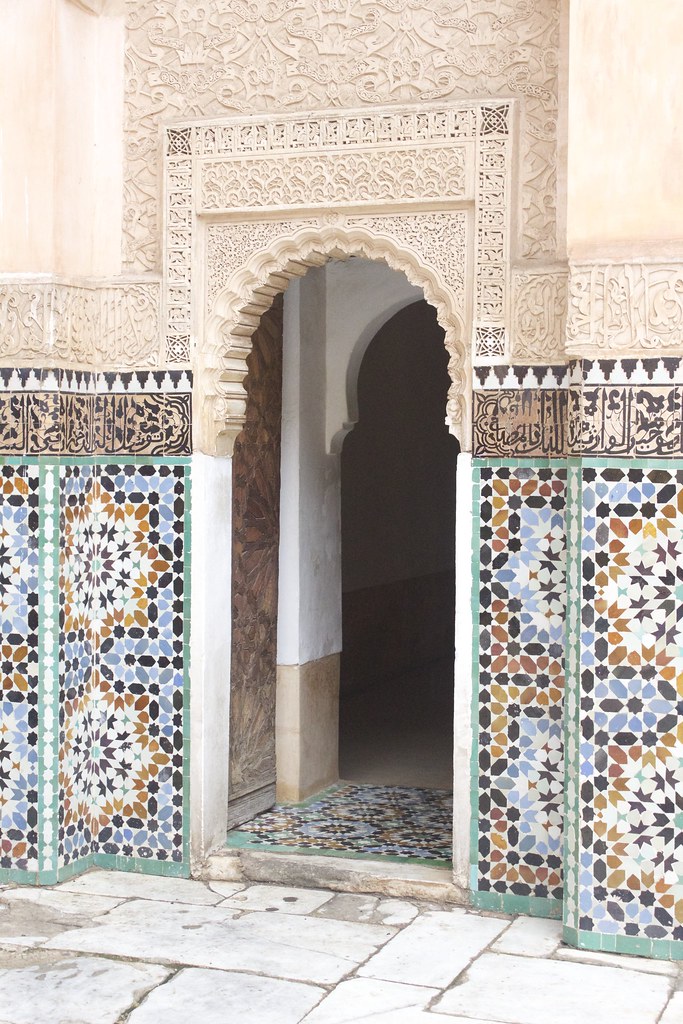
The palace’s design incorporates multiple interior gardens, fountains, and shaded passages, reflecting traditional Islamic principles of harmony and tranquility. The influence of Andalusian architecture is evident in the decorative tile mosaics and symmetrical layouts, while the Moorish influence contributes to the decorative arches and woodwork. Overall, the Bahia Palace embodies a harmonious fusion of these architectural styles, making it a symbol of Moroccan cultural identity and artistry.
Historical Significance
The Bahia Palace in Morocco is a stunning example of 19th-century Moroccan architecture and design, reflecting the rich cultural heritage of Marrakech. Built over several years, it was intended to be the grandest of palaces and a symbol of power and wealth for the grand vizier Si Moussa, who commissioned its construction. The palace combines intricate Moroccan and Andalusian styles, showcasing beautiful tile work, ornate carvings, and lush gardens. Throughout its history, the Bahia Palace served as a residence for the nobility and a center for political and social gatherings, highlighting its historical significance in Moroccan history. Today, it stands as a testament to the artistic and architectural achievements of the era, attracting visitors from around the world and preserving its legacy as a cultural monument of Marrakech.
Architecture and Design
Bahia Palace in Morocco is a stunning example of traditional Moroccan architecture and intricate design. It reflects the rich cultural heritage and artistic craftsmanship that have been passed down through generations. The palace’s elaborate courtyards, beautiful gardens, and detailed tile work showcase the harmonious blend of functionality and aesthetic appeal characteristic of Moroccan architectural style.
Overview of Architectural Style
The Bahia Palace in Morocco exemplifies a stunning blend of Moroccan Islamic architecture with intricate design elements and vibrant decorative arts. This historic palace showcases a harmonious combination of beautiful courtyards, lush gardens, and ornate room interiors, reflecting traditional Moroccan design principles. The architectural style is characterized by detailed tile work, carved woodwork, stucco decorations, and majestic archways that create an atmosphere of elegance and sophistication. Overall, the Bahia Palace stands as a remarkable example of Moroccan architecture that emphasizes intricate craftsmanship, cultural symbolism, and harmonious spatial planning.
Layout and Structure
The Bahia Palace in Morocco is a stunning example of Islamic and Moroccan architecture, reflecting intricate design and a harmonious layout. Its layout is thoughtfully organized to combine beauty, privacy, and functionality, with expansive courtyards, lush gardens, and ornate reception halls. The structure features a series of interconnected rooms and patios, each adorned with detailed tilework, carved wood, and stucco decorations that showcase the craftsmanship of the artisans. The palace’s design emphasizes symmetry and balance, creating a peaceful and elegant environment. The use of courtyards allows natural light and ventilation to flow throughout the complex, enhancing the comfort of its inhabitants. Overall, the architecture and layout of Bahia Palace demonstrate a sophisticated blend of aesthetics and practicality, embodying the rich cultural heritage of Morocco.
Notable Features and Decorations
The Bahia Palace in Morocco is a stunning example of Moroccan architecture and design, showcasing intricate craftsmanship and expansive courtyards. Its construction, primarily in the late 19th century, was intended to be a luxurious residence for the Grand Vizier and his family, reflecting opulence and grandeur. The palace’s architecture seamlessly blends traditional Moroccan, Islamic, and Andalusian styles, characterized by ornate tiles, carved woodwork, and lush gardens.
Notable features of the Bahia Palace include its beautiful zellij tilework, elaborate stucco work, and cedar wood carvings, which adorn the walls, ceilings, and windows. The palace complex comprises multiple courtyards, such as the central courtyard with a large fountain, shaded patios, and lush gardens designed for both beauty and privacy. Decorations are highly detailed, with intricate geometric and floral motifs that exemplify the artistic heritage of Moroccan craftsmanship. Overall, the Bahia Palace stands as a masterpiece of architectural elegance, combining functional spaces with decorative artistry to create a harmonious and majestic environment.
Key Areas Within Bahia Palace
The Bahia Palace in Morocco is a stunning example of Moroccan architecture and artistry, renowned for its intricate design and historical significance. Within its walls, visitors can explore several key areas that showcase the palace’s opulence and craftsmanship. These areas include the grand courtyards, elaborate gardens, beautifully decorated harem rooms, and the ornate reception halls, each offering a glimpse into the luxurious lifestyle of Morocco’s past royalty.
Grand Courtyard
The Bahia Palace in Morocco is renowned for its stunning architecture and lush courtyards, with the Grand Courtyard serving as a central feature. This expansive area is characterized by intricate tilework, elegant arches, and beautifully decorated columns that reflect the craftsmanship of Moroccan artisans. Visitors can admire the symmetry and grandeur of the space, which was originally designed to accommodate the sultan’s many courtiers. The courtyard’s serene atmosphere is enhanced by lush gardens, ornate fountains, and shaded walkways, making it a perfect place to experience the palace’s grandeur and historical significance.
El Badi Palace Garden
Bahia Palace and El Badi Palace Gardens are two of the most significant historical sites in Marrakech, Morocco, showcasing the rich cultural heritage and stunning architecture of the region. These sites offer visitors a glimpse into Morocco’s regal past and intricate craftsmanship.
Key areas within Bahia Palace and El Badi Palace Gardens include:
- Courtyards and Gardens: Spacious open-air areas adorned with lush greenery, fountains, and traditional Moroccan tiles, providing a tranquil setting for relaxation and reflection.
- Halls and Audience Rooms: Elaborately decorated rooms featuring intricate woodwork, carvings, and zellij tilework, used historically for ceremonies and royal gatherings.
- Private Quarters: Living spaces and chambers that highlight the luxurious lifestyle of Moroccan sultans, often decorated with ornate plasterwork and textiles.
- El Badi Palace Gardens: Expansive gardens surrounding the ruins of El Badi Palace, showcasing remnants of fountains, courtyards, and sculptures that tell stories of its former grandeur.
- Fortified Walls and Gateways: The impressive defenses and entrance points that reflect the strategic importance and the architectural ingenuity of the palaces.
Private Apartments
Bahia Palace in Morocco is renowned for its stunning architecture and expansive layout, featuring several key areas within its private apartments that exemplify luxury and intricate craftsmanship. These private apartments offer a glimpse into the opulent lifestyle of former Moroccan elites, with each space thoughtfully decorated and designed for comfort and privacy.
The private apartments typically include beautifully decorated bedrooms with carved woodworks and ornate furnishings, providing a regal ambiance. These rooms often feature mosaics, elaborately tiled floors, and luxurious textiles, highlighting traditional Moroccan artistry. Additionally, there are private sitting areas and reception rooms where residents could host intimate gatherings in elegant surroundings.
Many of these apartments are built around serene courtyards lush with gardens and fountains, creating tranquil environments for relaxation. Some private quarters also contain private baths, often equipped with traditional Moroccan tiles and motifs, reflecting the emphasis on both aesthetics and functionality. Overall, the private apartments within Bahia Palace showcase a harmonious blend of artistry, comfort, and privacy that epitomizes Moroccan royal hospitality.
Mosque and Religious Spaces
Bahia Palace in Morocco is renowned not only for its stunning architecture but also for its significant religious and spiritual spaces. Within the palace complex, several key areas highlight the importance of mosque and religious functions, reflecting the cultural and religious heritage of Marrakech.
The main mosque, often used for communal prayers, features an exquisite prayer hall with intricately carved wooden ceilings and decorative tilework, showcasing traditional Moroccan craftsmanship. This space serves as a central point for spiritual gatherings and daily worship practices.
Adjacent to the mosque are various small courtyards and spaces dedicated to private reflection and rituals. These areas are designed to accommodate the needs of palace residents and visitors seeking spiritual solace within an opulent setting.
Additionally, the palace houses several smaller prayer rooms and alcoves, often used by female members of the household for their religious observances. These spaces are characterized by delicate decorations, calligraphy, and ornate arches, emphasizing their sacred purpose.
Overall, the religious spaces within Bahia Palace exemplify the integration of spirituality into daily life and demonstrate the architectural beauty that Morocco is famous for, making the site a symbol of both cultural heritage and religious significance.
Art and Ornamentation
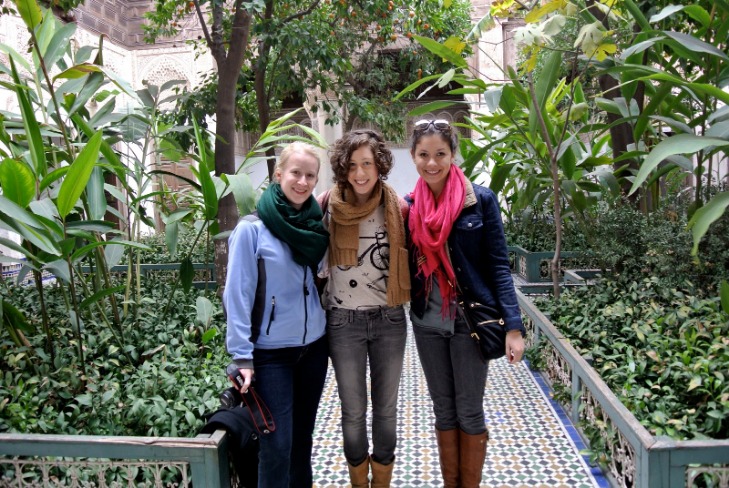
The Bahia Palace in Morocco stands as a stunning example of art and ornamentation, reflecting the rich cultural heritage and exquisite craftsmanship of Moroccan artisans. Its intricate designs, detailed tile work, and elaborate carvings showcase the artistry that has been preserved through centuries. Exploring the palace reveals a harmonious blend of function and aesthetic beauty, making it a remarkable site for appreciating the art of ornamentation in Moroccan architecture.
Tile Work (Zellige)
The Bahia Palace in Morocco is a stunning example of traditional Moroccan architecture and artistry, featuring intricate ornamentation and elaborate tile work known as Zellige. This palace, built in the late 19th century, showcases the mastery of Moroccan artisans through its beautifully decorated walls, courtyards, and halls. The use of Zellige tiles, crafted from small geometric pieces of glazed terracotta, creates mesmerizing patterns that reflect Islamic artistic influences and symbolize the unity of design and craftsmanship. These vibrant tiles not only serve decorative purposes but also demonstrate functional qualities by maintaining cool temperatures within the palace. The detailed plasterwork and carved wood accents further enhance the aesthetic, making the Bahia Palace a remarkable cultural and artistic treasure of Morocco.
Wood Carvings
The Bahia Palace in Morocco is renowned for its exquisite art and intricate ornamentation, reflecting a harmonious blend of Islamic and Moroccan architectural styles. One of the most striking features of the palace is its elaborate wood carvings, which showcase the exceptional craftsmanship of Moroccan artisans. These detailed woodworks adorn doors, windows, ceilings, and furniture, often featuring floral motifs, geometric patterns, and calligraphic designs that emphasize both aesthetic beauty and spiritual symbolism. The craftsmanship involved in creating these wood carvings demonstrates a deep respect for tradition and a mastery of techniques passed down through generations. Such ornamentation not only enhances the palace’s regal atmosphere but also provides a glimpse into the rich cultural heritage of Morocco’s artistic history.
Stucco and Plaster Decorations
The Bahia Palace in Morocco is renowned for its exquisite art and ornamentation, showcasing a masterful blend of intricate stucco work and plaster decorations that exemplify Moroccan craftsmanship. These decorative elements contribute significantly to the palace’s grandeur and historical significance, reflecting the cultural artistry of the region.
The palace’s walls, ceilings, and courtyards are adorned with lavish stucco carvings and plaster motifs, which feature detailed floral patterns, arabesques, and calligraphic designs. These embellishments not only serve aesthetic purposes but also create a sense of spiritual harmony and luxury, characteristic of Moroccan royal architecture.
- Stucco Decorations: Skilled artisans used lime-based plaster to craft delicate, three-dimensional motifs that enrich the palace’s surfaces. These ornate stucco works often include geometric and botanical patterns, which are meticulously shaped and sometimes gilded to highlight their elegance.
- Plaster Carvings: The plaster embellishments extend to archways, ceilings, and doorframes, demonstrating high levels of craftsmanship. These carvings often incorporate complex motifs and calligraphic inscriptions, emphasizing the importance of art in religious and cultural expression.
- Color and Gilding: While much of the stucco work remains in its natural white or light hues, touches of vibrant colors and gold leaf are sometimes integrated to enhance the decorative effect, adding richness to the overall aesthetic.
In conclusion, the art and ornamentation of the Bahia Palace, particularly its stucco and plaster decorations, serve as a testament to Moroccan artistic heritage, combining intricate craftsmanship with cultural symbolism that continues to awe visitors today.
Visiting Bahia Palace
The Bahia Palace in Morocco is a stunning example of Moroccan architecture and craftsmanship, offering visitors a glimpse into the grandeur of historical palaces. Nestled in the vibrant city of Marrakesh, this majestic site features intricate carvings, lush gardens, and beautifully decorated rooms that showcase the rich cultural heritage of the region. Exploring the Bahia Palace provides a unique opportunity to discover the opulence and artistry of Morocco’s royal past.
Tourist Information
Bahia Palace in Morocco is a stunning example of Moroccan architecture and a must-visit historical site in Marrakech. It was built in the late 19th century and served as the royal residence for the grand vizier and his family, showcasing intricate design and beautiful gardens. Visitors can explore the lavish courtyards, ornate rooms, and peaceful patios that reflect traditional Moroccan craftsmanship.
When planning your visit, look for guided tours to enrich your understanding of the palace’s history and architecture. It’s recommended to visit in the early morning or late afternoon to avoid the peak crowds and enjoy the serene atmosphere. Don’t forget to wear comfortable shoes, as the site involves walking through expansive grounds with numerous rooms and corridors.
Bahia Palace is located in the Medina of Marrakech, easily accessible from other major attractions. Entry fees are modest, and it’s best to purchase tickets at the entrance. Remember to respect the site by not taking flash photos inside the delicate rooms and by maintaining a respectful tone when exploring this historical treasure.
Nearby, you can explore additional attractions such as the Saadian Tombs and the Marrakech Souks, making your visit to Bahia Palace part of a memorable cultural experience in Morocco’s vibrant city.
Best Time to Visit
Visiting Bahia Palace in Morocco offers a mesmerizing glimpse into Moroccan history and architecture. Located in Marrakech, this 19th-century palace is renowned for its stunning courtyards, intricate tilework, and lush gardens. Exploring the palace provides a unique experience of Moroccan royal life and artistry.
The best time to visit Bahia Palace is during the spring (March to May) and fall (September to November) when the weather is warm but not excessively hot. These seasons provide comfortable temperatures for exploring the extensive grounds and appreciating the details of the palace without the intense heat of summer. Visiting during these months also allows travelers to enjoy the vibrant local atmosphere and outdoor spaces more fully.
Guided Tours and Accessibility
Visiting Bahia Palace in Morocco offers a remarkable glimpse into the country’s rich history and stunning architecture. Guided tours are highly recommended to fully appreciate the intricate designs, historical significance, and stories behind this grand 19th-century palace. Expert guides provide insightful commentary, enhancing the experience and helping visitors understand the cultural importance of each area within the palace complex.
Regarding accessibility, Bahia Palace strives to accommodate all visitors; however, some parts of the site, such as steps and uneven surfaces, may present challenges for those with mobility impairments. It is advisable to inform the tour operator in advance if special assistance is needed. Overall, the palace remains a captivating destination for travelers seeking a blend of history, artistry, and Moroccan heritage.
Preservation and Restoration
The Bahia Palace in Morocco stands as a magnificent example of Islamic architecture and historical elegance. Preservation and restoration efforts play a vital role in maintaining its intricate design, vibrant mosaics, and lush gardens, ensuring that future generations can experience its cultural significance. These activities help safeguard the palace’s rich heritage while allowing visitors to appreciate its beauty and historical importance.
Restoration Projects
The Bahia Palace in Morocco is a stunning example of Moroccan architecture and craftsmanship, reflecting the rich cultural heritage of Marrakech. Preservation and restoration efforts are vital to maintain its intricate design, vibrant tilework, and historic significance for future generations. These projects aim to stabilize the structure, conserve original materials, and restore damaged decorative elements, ensuring the palace remains a symbol of Moroccan history and artistry.
Restoration projects at the Bahia Palace typically involve careful documentation and analysis to identify areas needing repair. Skilled artisans are often employed to restore ornate ceilings, frescoes, and intricately carved wooden screens, using traditional methods and authentic materials. Preservation also includes safeguarding the palace’s gardens and courtyards, which are integral to its overall aesthetic and historical context.
Efforts by local authorities, heritage organizations, and international partners help fund and oversee these projects, emphasizing sustainable practices that respect the original architecture. Ongoing restoration initiatives ensure that the Bahia Palace continues to serve as a cultural landmark, attracting visitors and scholars alike, while preserving its historical integrity for generations to come.
Challenges in Preservation
Bahia Palace in Morocco stands as a stunning example of Moroccan art and architecture, reflecting the cultural heritage of the region. Preserving such a historical site presents numerous challenges that require careful attention to maintain its authenticity and structural integrity. Preservation efforts must contend with environmental factors such as humidity, temperature fluctuations, and pollution, which can accelerate deterioration of materials like wood, plaster, and paint. Additionally, ongoing human activity, including tourism and urban development, poses risks of physical damage and wear. Restoration work must strike a delicate balance between repairing damage and retaining original craftsmanship to preserve the palace’s historical significance. Limited funding and expertise also hinder comprehensive preservation initiatives, making it essential to develop sustainable strategies that involve local communities and government support to ensure the long-term safeguarding of Bahia Palace.
Future Conservation Efforts
The Bahia Palace in Morocco stands as a magnificent example of Moroccan architecture and cultural heritage, requiring ongoing preservation and restoration efforts to maintain its historic splendor. As an intricate symbol of Moroccan history and artistry, careful conservation techniques are vital to protect its delicate stuccoes, intricate woodwork, and ornate tile mosaics from the effects of weather, pollution, and natural aging. Future conservation efforts should focus on implementing advanced preservation technologies, engaging local communities in safeguarding their heritage, and establishing comprehensive maintenance plans to ensure the palace remains a vibrant cultural monument for generations to come.

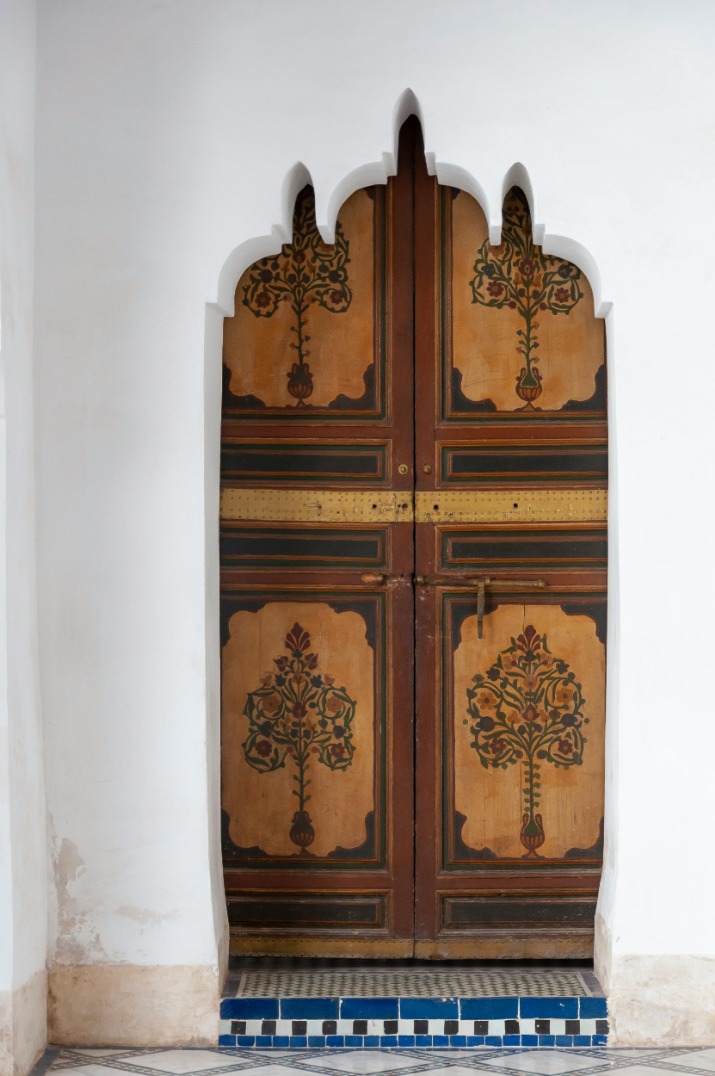
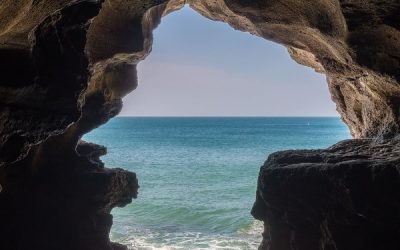
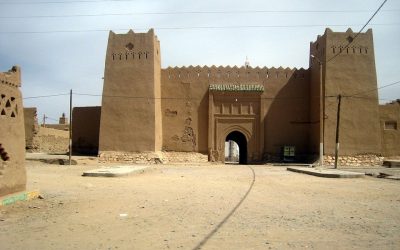

0 Comments